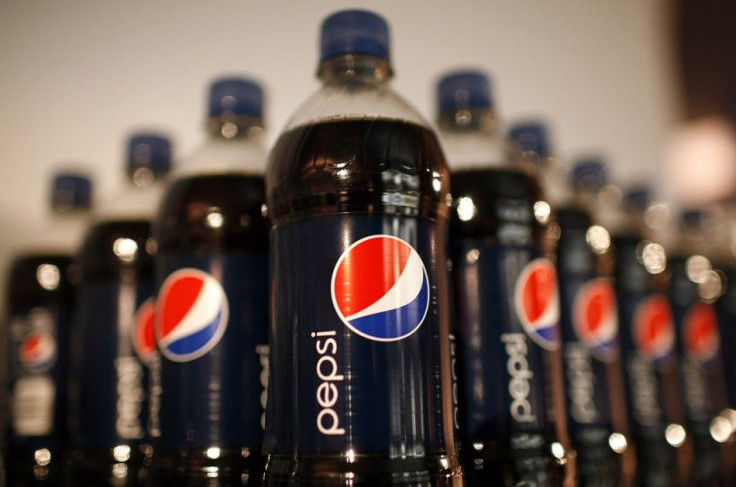PepsiCo Inc. Earnings Preview: Q4 Boosted By Sales in Emerging Markets

PepsiCo Inc. (NYSE:PEP) is projected to report stronger fourth-quarter profit as the world's largest snack-food maker continues targeting emerging market growth and improves its hedging against commodity price swings.
PepsiCo Inc. (NYSE:PEP), which reports earnings Thursday before the markets open, is expected to post a profit of $1.13 per share, up 7.6 percent from a year ago when PepsiCo reported earnings of $1.05 per share, according to analysts polled by Thomson Reuters.
Revenue is projected to come in at $19.92 billion for the quarter, 9.7 percent above the year-earlier total of $18.16 billion.
For the year, analysts expect PepsiCo to earning $4.39 per share on revenue of $66.32 billion.
The Purchase, N.Y.-based company said it expects to record high single-digit core earnings per share growth on a 52-week U.S. dollar basis from its 2010 core EPS of $4.13.
Growth in the international markets is going to dwarf slower growth in PepsiCo's more developed markets, said Thomas Mullarkey, an analyst at Morningstar Inc.
Emerging Markets
In 2010, PepsiCo had 53 percent of its revenue from the U.S. and 47 percent from international markets.
In the third quarter of 2011, PepsiCo's snack and beverage lines saw robust volume growth in overseas markets with especially strong performance in emerging markets.
Snacks delivered double-digit revenue growth in 19 of PepsiCo's top 20 snack markets. China snacks volume grew 31 percent, India grew 26 percent and Saudi Arabia grew 24 percent. In Russia, excluding the Wimm-Bill-Dann acquisition impact, snacks revenue has grown more than 70 percent over the past two years.
The emerging markets will be growing pretty good in terms of their snack food business, which is really one of the jewels in PepsiCo's crown, Mullarkey said.
Although PepsiCo's beverage sales did not perform as well as its snack business in the third quarter, the segment still benefited from strong demand in emerging markets.
Beverage volume rolled in double-digit gains across many of PepsiCo's emerging markets, with India growing at 19 percent, Turkey growing at 16 percent, and Saudi Arabia and China growing at 12 percent, respectively.
Although we remain concerned about sluggish Americas beverage trends, we see exposure to stronger international markets as a potential offset, Standard & Poor's equity analyst Esther Kwon wrote in a Jan. 28 note.
Strategic Actions
PepsiCo's recent strategic actions are expected to help sustain strong growth in the fourth quarter and beyond.
Its focus on health and wellness should continue to drive the top line, Bank of America Merrill Lynch analyst Bryan Spillane wrote in a Jan. 31 note.
Mullarkey said he expects PepsiCo's growth in the health and wellness segment will primarily be organic but be supplemented through select acquisitions, as the company has an impressive record of creating or acquiring products aligned with emerging consumer trends.
Over the past decade, Pepsi's Good-For-You portfolio has grown to $13 billion in annual sales from $2.2 billion, as consumers increasingly demand tasty and nutritional foods and drinks.
In February 2011, PepsiCo acquired a majority interest in leading Russian food and beverage company Wimm-Bill-Dann Foods OJSC for $3.8 billion, and completed the purchase of the remainder in September. The deal gave PepsiCo a powerful, dairy based portfolio in a fast-growing region.
Similarly, the November acquisition of Brazil's Mable, one of the country's biggest cookie and cracker makers, allowed PepsiCo to tap into a promising segment in a fast growing market.
Also in November, PepsiCo decided to refranchise in China via Chinese instant noodle and drinks maker Tingyi (Cayman Islands) Holding Corp. (HKG:0322). This decision came after years of attempting to go to market on its own, and is a prudent way for PepsiCo to build a platform of greater scale that can more effectively compete with Coca-Cola, Spillane wrote.
(PepsiCo's) management understands the urgency to bolster its international performance, so that its growth algorithm is less dependent on North America Foods, Spillane wrote.
Commodity Cost
Volatility in commodity prices, particularly for corn, juices, wheat, aluminum and plastic resins, could pinch PepsiCo's sales and profitability.
However, Mullarkey is not forecasting any big shocking wild swings, one way or the other due to commodity price changes.
Hugh Johnston, chief financial officer at PepsiCo, said in an Oct.12 conference call with analysts that the company had the full calendar year substantially locked in through their hedging programs.
PepsiCo does a pretty good job of trying to hedge on a rolling basis all of these (commodities) input costs, Mullarkey said. So even if the prices on the spot market fluctuate wildly, PepsiCo's margins can stay relatively consistent.
Stock Performance
In the event that more bearish sentiment creeps into the market, Mullarkey thinks PepsiCo could provide a safe haven in a flight to quality. He also thinks the shares, on which he has a $76 price target, could be attractive to value investors.
PepsiCo's major competitor, the Coca-Cola Company (NYSE:KO), reported its fourth-quarter profit that topped analysts' estimates helped by sales of teas and juices in Asia.
Other competitors include: Dr. Pepper Snapple Group Inc. (NYSE:DPS) and Monster Beverage Corp. (NASDAQ:MNST). Both companies' stocks rose by less than one percent in midday trading.
PepsiCo Inc. (NYSE:PEP) closed at $66.76, up 24 cents or 0.36 percent, in Tuesday trading. Year to date, the stock gained 0.62 percent in value.
© Copyright IBTimes 2024. All rights reserved.






















